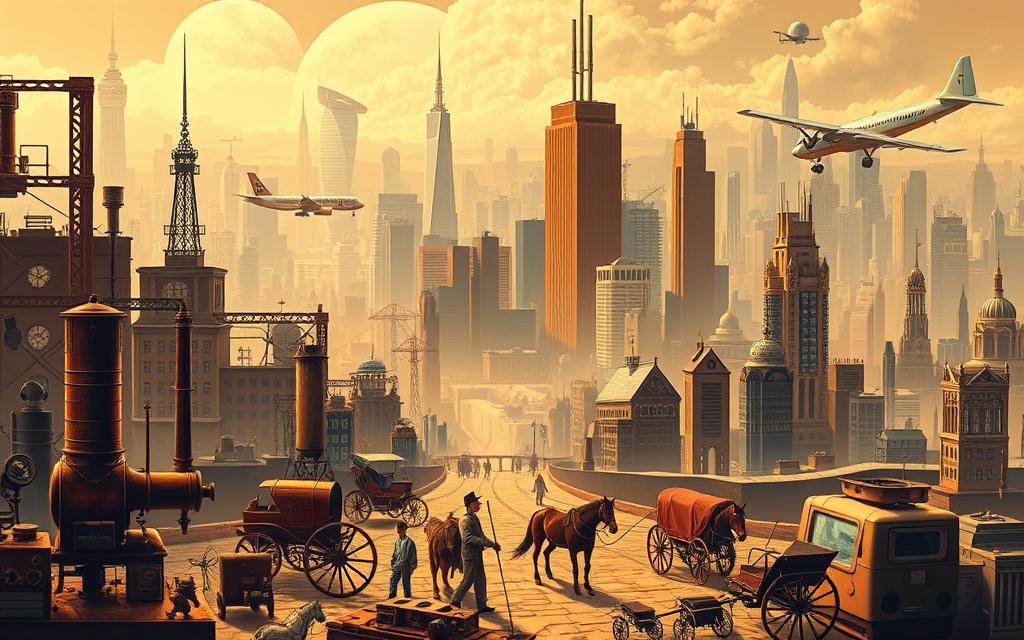Our journey from prehistoric tools to artificial intelligence is fascinating. Early humans at Lake Turkana made flint tools 3.3 million years ago. This was the start of solving problems systematically.
Using fire for cooking and warmth around 1 million BCE changed everything. It helped in food preparation and building societies. Also, irrigation systems in Mesopotamia in 6000 BCE helped grow food, creating stable communities.
The Industrial Revolution was a big change. James Watt’s steam engine in 1765 powered factories and transport. Richard Trevithick’s railway locomotive in 1804 and Karl Benz’s car in 1885 changed how we move.
Our comprehensive timeline shows how these steps connect across cultures.
In the 20th century, we saw big leaps like the transistor in 1947 and Sputnik in 1957. Now, in the digital age, we have CRISPR gene editing in 2012 and ChatGPT in 2022. These advancements show how fast we’re moving forward.
This journey shows how we keep finding new ways to do things. From stone tools to computer networks, we’ve come a long way. We’ll look at how early windmills and Gutenberg’s press laid the groundwork for today’s world.
How Technology Has Evolved Over Time: Foundations of Progress
Technological progress relies on three key areas: materials and power sources, social organisation, and knowledge transmission. These elements connect ancient tools to today’s technology, as shown in the history of technology.
Materials Define Possibilities
Energy Transforms Civilisations
James Watt’s steam engine (1765) and Thomas Edison’s electrical grids (1879) changed how we use energy. Nikolaus Otto’s combustion engine (1876) helped create global transport networks. Each innovation needed new materials, showing how technology grows with material science.
Societies Shape Solutions
Crisis Accelerates Adaptation
The Neolithic Revolution showed how settled communities could develop irrigation systems. During COVID-19 impact, tools like Zoom became key for remote work. Good social organisation turns individual ideas into big steps forward.
Knowledge Bridges Generations
From Scrolls to Search Engines
Johannes Gutenberg’s printing press (1455) started sharing information on a large scale. Vinton Cerf and Robert Kahn’s TCP/IP protocol (1974) built today’s digital networks. Each step in knowledge transmission – from cave paintings to ChatGPT – increases our learning power.
This journey from local crafts to global systems shows technology as our shared tool. As materials improve, societies change, and knowledge spreads, our ability to shape our world grows fast. The next chapter is for those who master these three areas of progress.







